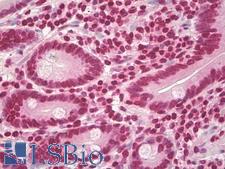Login
Registration enables users to use special features of this website, such as past
order histories, retained contact details for faster checkout, review submissions, and special promotions.
order histories, retained contact details for faster checkout, review submissions, and special promotions.
Forgot password?
Registration enables users to use special features of this website, such as past
order histories, retained contact details for faster checkout, review submissions, and special promotions.
order histories, retained contact details for faster checkout, review submissions, and special promotions.
Quick Order
Products
Antibodies
ELISA and Assay Kits
Research Areas
Infectious Disease
Resources
Purchasing
Reference Material
Contact Us
Location
Corporate Headquarters
Vector Laboratories, Inc.
6737 Mowry Ave
Newark, CA 94560
United States
Telephone Numbers
Customer Service: (800) 227-6666 / (650) 697-3600
Contact Us
Additional Contact Details
Login
Registration enables users to use special features of this website, such as past
order histories, retained contact details for faster checkout, review submissions, and special promotions.
order histories, retained contact details for faster checkout, review submissions, and special promotions.
Forgot password?
Registration enables users to use special features of this website, such as past
order histories, retained contact details for faster checkout, review submissions, and special promotions.
order histories, retained contact details for faster checkout, review submissions, and special promotions.
Quick Order
PathPlusTM CCND1 / Cyclin D1 Antibodies
CCND1 is a member of the cyclin family with nuclear expression in the majority of adult tissues. CCND1 is involved in regulating the G1/S transition via complex formation with CDK4 and CDK6 and inhibition of RB1. CCND1 is also involved in regulating proliferation, differentiation and growth by binding to receptors such as estrogen receptor alpha (ESR1), androgen receptor (AR), and thyroid hormone receptors. Because of its regulatory functions in cell cycle progression, CCND1 is a frequent target of amplification or mutation as part of tumorigenesis. In immunohistochemistry, CCND1 has positive nuclear staining in squamous epithelium of the tonsil and also in mantle cell lymphoma. In cancer, it stains positively in multiple myelomas, some parathyroid adenomas and parathyroid carcinomas, and it is overexpressed in a number of cancers including breast cancer.
References: Molecular Medicine Reports 9.1 (2014): 137-143, DOI: 10.3892/mmr.2013.1774; Cell. 1997 Feb. 88 (3): 405–15, PMID: 9039267; Molecular Endocrinology. 2001 May. 15 (5): 797–811, PMID: 11328859
1 PathPlusTM Antibody

☰ Filters
Products
Antibodies
(1)
Type
Primary
(1)
Target
CCND1 / Cyclin D1
(1)
Reactivity
Human
(1)
Mouse
(1)
Application
IHC
(1)
IHC-P
(1)
WB
(1)
Host
rabbit
(1)
Product Group
PathPlus Cancer
(1)
PathPlus Cancer Pathology
(1)
Clonality
polyclonal pc
(1)
Format
Unconjugated
(1)
Epitope
aa250-300
(1)
Publications
No
(1)

Cancer Pathology
Cancer
CCND1 / Cyclin D1 Rabbit anti-Human Polyclonal (aa250-300) Antibody
Mouse, Human
IHC, IHC-P, WB
Unconjugated
100 µg/$375
Viewing 1-1
of 1
product results











